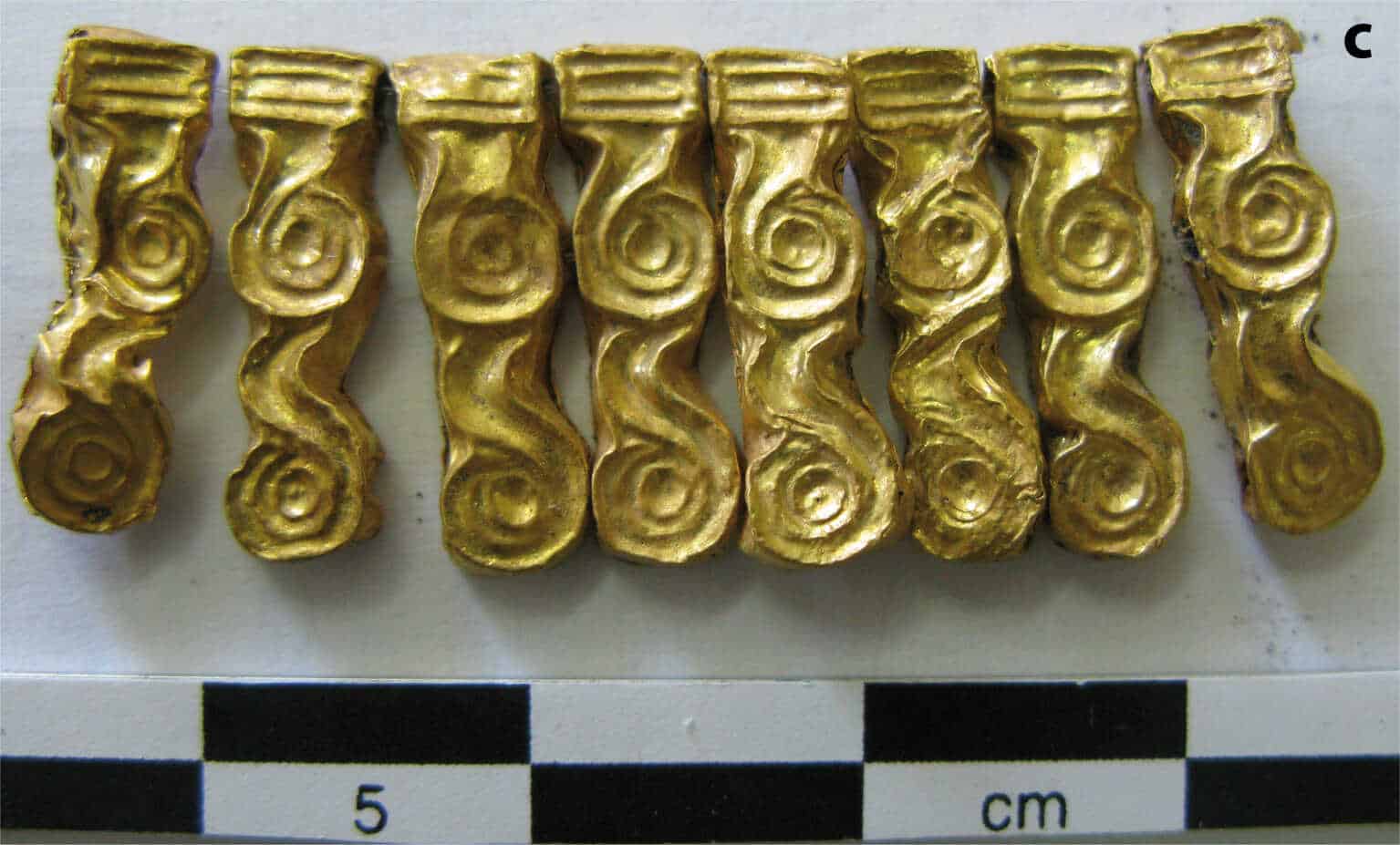

A new study of over 165 gold artifacts unearthed from ancient tombs near the Bay of Volos in Thessaly, Greece, sheds new light on the craftsmanship of Mycenaean artisans, revealing the advanced techniques they used to work with gold in Bronze Age Greece more than 3,500 years ago.
Published in the Journal of Archaeological Science, the study marks the first detailed examination of Mycenaean goldsmithing in the region. The area is historically linked to Greek mythology, including the legend of the Argonauts and the Golden Fleece.
The artifacts come from four tholos, or beehive-shaped tombs, excavated in Dimini and Volos. The Kazanaki tomb, discovered undisturbed in 2004, stood out. Archaeologists uncovered the remains of seven individuals, including children, along with more than 150 gold objects.
These included decorated beads, discs, and weapon ornaments. Despite being looted in ancient times, the other tombs in Kapakli, Lamiospito, and Toumba still contained valuable items that contributed to the study.
The Mycenaeans, who dominated parts of Greece between 1600 and 1100 BCE, used such objects during burial ceremonies for high-ranking individuals. Many items, including delicate gold discs and embossed beads, were too fragile for daily wear.
Researchers believe they were crafted specifically for funerary purposes, symbolic offerings that held meaning for the afterlife rather than life.
One of the key findings was the efficient use of gold. With just 10 grams, artisans could produce up to 200 thin sheets to adorn burial clothing.

Simpler objects, like necklace beads, were made by joining two gold sheets, one flat and one decorated, without soldering. Instead, edges were folded to hold the pieces together, suggesting the work was done locally with basic tools, possibly by craftspeople who were not full-time goldsmiths.
In contrast, more complex pieces such as rings and weapon caps showed signs of regular use and bore detailed designs, including spirals, flowers, and human faces.
Experienced artisans likely produced these in specialized regional workshops that served elite communities.
Chemical analysis revealed that the Mycenaeans intentionally mixed gold with silver and copper to create varying tones. Most pieces contained between 4% and 35% silver and up to 5% copper. The metals were likely collected from nearby rivers, where gold naturally appears with other elements.
Interestingly, beads from the same tombs had nearly identical compositions, suggesting they were made in batches for specific burial events. In the Kazanaki tomb, researchers identified three groups of gold discs, possibly linked to different phases of tomb use.

Compared with gold artifacts from the Argolid, home to Mycenae and other major centers, Thessalian jewelry showed more uniformity.
By contrast, items from places like Prosymna included potentially Egyptian-inspired reddish-toned beads. Still, Mycenaean techniques were distinct; unlike Egyptian goldsmiths, they did not use platinum or advanced soldering methods.
The study also raises questions about the organization of gold production. While simple pieces were likely made near the tombs, more sophisticated objects probably came from centralized workshops.
The lack of permanent goldsmith sites across Mycenaean settlements may reflect the work’s seasonal or ceremonial nature.
